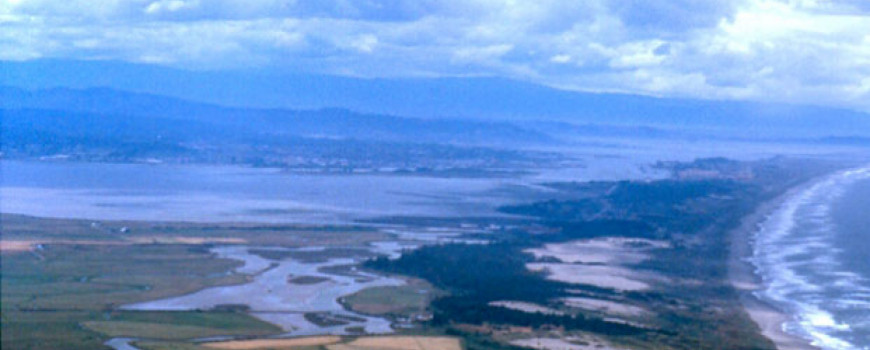Humboldt Bay EBM

Humboldt Bay Ecosystem-Based Management (EBM) Program
Coordinated by SGEP Advisor Joe Tyburczy, the EBM Program is innovative and exciting. It will build an ecosystem-based management framework, prepare two to six proposals on high priority issues, and develop recommendations for establishment and maintenance of a Humboldt Bay Ecosystem database. EBM is a comprehensive process of integrated resource management that considers the entire ecosystem, including humans. It integrates the best available scientific, traditional and local knowledge, is geographically specific, defines management based on ecological boundaries, addresses complexities of natural processes and social systems, considers multiple simultaneous factors influencing management, and is collaborative, integrating social and environmental goals.
The purpose of this project is to develop a practical implementation of an ecosystem approach. A possible ecosystem project could be studying the effects of storm water run-off from urban areas on the aquatic habitats of Humboldt Bay. Urban areas and the bay are generally managed and regulated by separate entities. The Humboldt Bay Ecosystem Program will encourage innovative and synthetic thinking to evaluate effects and recommend management actions.
Why is EBM important? After decades of research, improved scientific understanding of ecosystems and increased public involvement in natural resource issues, EBM offers a new paradigm for protecting and enhancing our natural resources. Citizens of the Humboldt Bay ecosystem are experienced with interactive programs requiring stakeholder participation in decision-making. They have a definable ecosystem, a strong sense of place, and treasure their quality of life.
Humboldt Bay Initiative
The Humboldt Bay Initiative (HBI) is a diverse partnership formed to implement the Humboldt Bay EBM program.
HBI completed a formal strategic planning process in 2009. Six priority ecosystem-based management (EBM) strategies were developed based on identification of “EBM targets” and threats to those targets.
Establish the Humboldt Bay Initiative
Coordinated Response to Coastal and Climate Change
Coordinated Response to Invasive Species
Study and Control of Sediment
Promote Sustainable Development
Support Integrated Forest Management
-
Principal Investigators
Scripps Institution of Oceanography at University of California, San Diego

